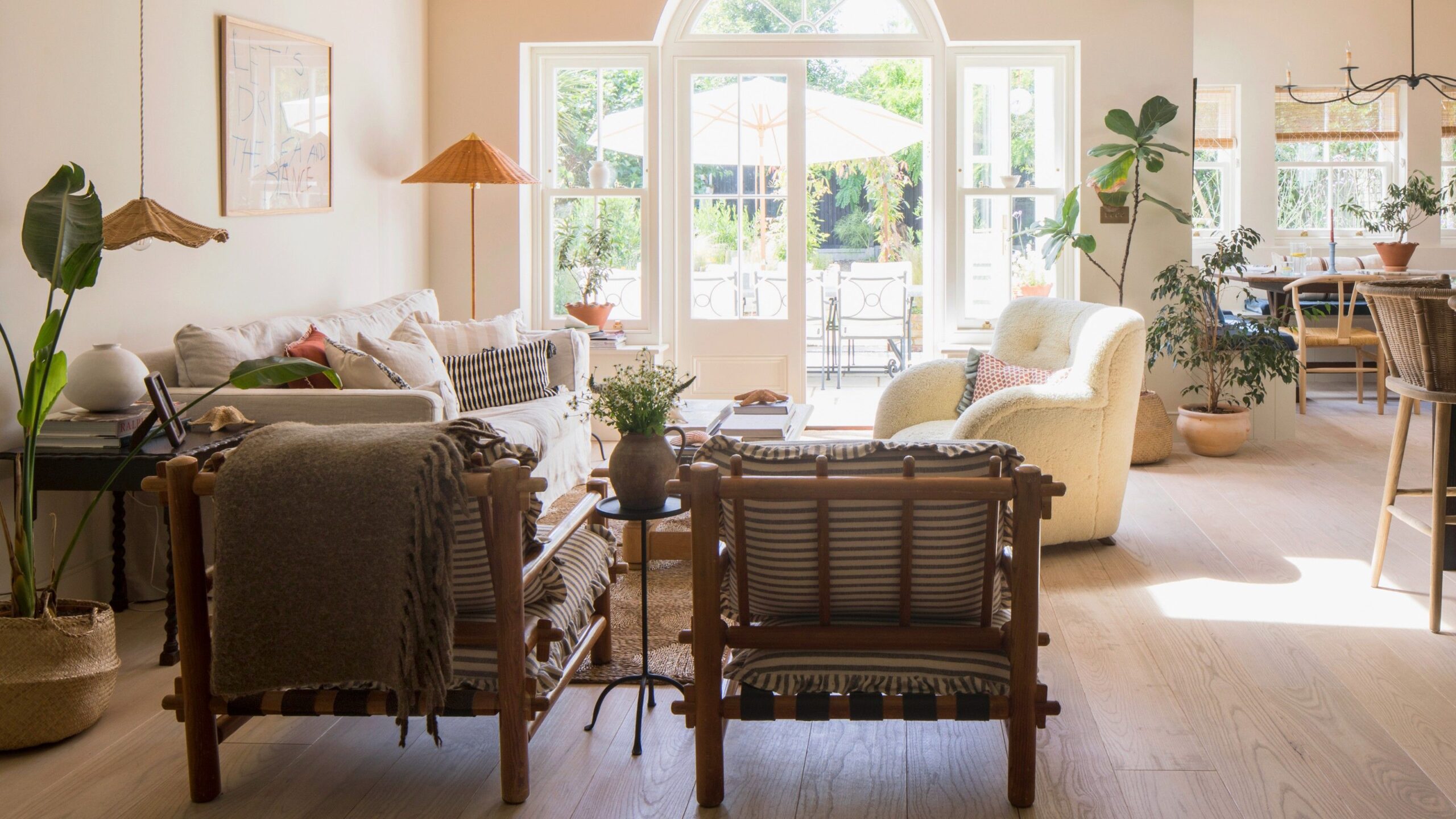The lounge area is the heart of a home—a place to relax, entertain, and spend time with family or guests. While colors and lighting affect mood, it’s the furniture choices that truly define how this space functions and feels. From sofas and coffee tables to shelving and wood dining tables, each piece plays a role in how people move, interact, and enjoy the space. Well-chosen furniture enhances flow, improves comfort, and helps the lounge transition seamlessly between casual and social uses.
Defining Zones and Purpose Through Furniture
In many homes, especially open-plan layouts, the lounge area may overlap with dining or kitchen zones. The furniture you choose helps define each space without using physical walls. Large sectionals or low-profile chairs can naturally outline the lounging zone, while wood dining tables visually anchor the dining area. When thoughtfully arranged, the furniture creates a clear purpose for each section while maintaining visual cohesion.
A round wood dining table close to the lounge, for example, promotes a soft, uninterrupted flow, making movement between areas easy. In contrast, an overly large or bulky dining table may feel obstructive or crowd adjacent lounging spaces. The scale and shape of furniture should complement the architecture of the room and guide how people navigate it.
Enhancing Circulation and Accessibility
Good flow in a lounge area depends on how easily people can move through it. When furniture is too large or poorly arranged, it disrupts circulation, making the room feel cramped or awkward. Strategic placement of seating and tables opens up pathways and encourages natural movement.
Wood dining tables that are appropriately sized for the room help maintain these pathways. A rectangular table works well in long, narrow spaces, while a round table enhances flexibility in more compact layouts. By keeping the area around the table free of clutter and allowing at least three feet of clearance, you improve both the look and feel of the lounge area.
Creating Comfort and Usability
Beyond layout, the functionality of lounge furniture impacts how the space is used. Low, deep sofas invite lounging, while upright chairs offer better support for conversations or reading. Coffee tables and side tables need to be accessible without blocking movement.
Wood dining tables also serve as multifunctional pieces in or near lounge areas. They can double as a workspace, a game table, or even a snack station during movie nights. Choosing one with a sturdy design and a finish that complements your living furniture helps the lounge feel more cohesive and welcoming.
Balancing Aesthetics and Practicality
Furniture affects not only how a lounge works, but how it looks. Modern lounge areas often balance minimalism with warmth by blending clean lines with natural materials. Incorporating pieces like wood dining tables adds texture and warmth to an otherwise contemporary room. Wood complements most color schemes and brings a timeless, grounded feel to the space.
Matching or coordinating the wood tones of your dining and lounge furniture can also unify the area. For instance, a walnut wood dining table paired with a similarly toned media console or coffee table enhances design consistency. Conversely, mixing too many materials and finishes can make a space feel visually chaotic, disrupting both its flow and functionality.
Flexibility for Different Needs
Lounge areas serve multiple functions throughout the day. Furniture that allows for flexibility—such as modular seating or extendable wood dining tables—helps the space adapt to different activities. Whether you’re hosting guests, working from home, or enjoying a quiet evening, having furniture that adjusts to your needs improves the overall experience.
For small apartments or compact living rooms, a foldable or extendable wood dining table can be a game-changer. It provides full function when needed and can be minimized to save space, preserving the lounge’s openness and flow.
Supporting Social Interaction
The arrangement and type of furniture in a lounge influence how people interact. A conversation-friendly layout—such as chairs grouped around a coffee table—encourages face-to-face dialogue. Placing a wood dining table nearby invites people to gather for meals, games, or conversation, strengthening the space’s social function.
In open-plan homes, positioning the dining table in a way that flows naturally from the lounge ensures that the social energy of the room isn’t interrupted. Rather than feeling like separate zones, the lounge and dining areas work together as part of a cohesive, connected living space.
Conclusion
Furniture is more than décor; it’s a design tool that shapes how we use and enjoy our homes. The size, placement, and function of furniture all contribute to how well a lounge area supports movement, comfort, and connection. Choosing the right pieces—like appropriately scaled seating, smart layouts, and versatile wood dining tables—can dramatically improve both flow and functionality. With thoughtful selection, your lounge becomes not just a room, but a dynamic and inviting space tailored to your lifestyle.







